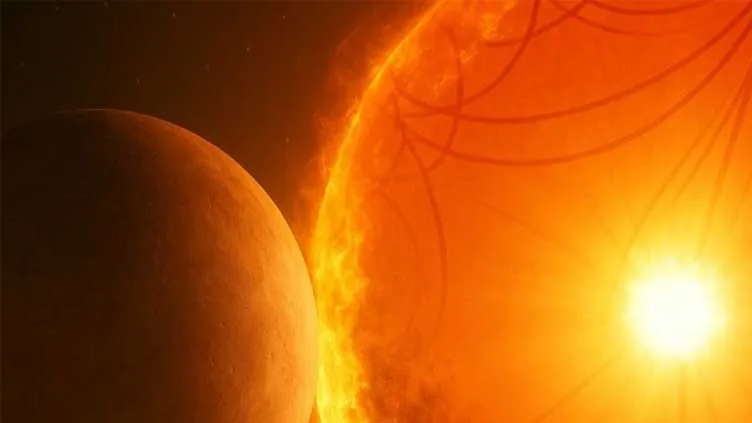
Astronomers Uncover Stunning Secrets Hidden in Stellar 'Music'!
2025-05-12
Author: Siti
A Groundbreaking Discovery in Stellar Science
In a remarkable breakthrough, astronomers have unveiled excited secrets of the universe by 'listening' to the vibrations of a neighboring star, reshaping our understanding of stellar behavior. While stars may not emit sounds audible to the human ear, they resonate at unique frequencies detectable with advanced technology, akin to how geologists interpret Earth's inner layers.
The Science Behind Stellar 'Songs'
Published in the prestigious *Astrophysical Journal*, a new study opens an exciting pathway into stellar investigations through what can be described as 'stellar music'. "The vibrations of a star are like its unique song," explains Yaguang Li, a researcher from the University of Hawai‘i at Mānoa. These oscillations allow scientists to determine critical attributes of a star, including its mass, size, and age.
Astroseismology: Unlocking Stellar Secrets
While the concept of astroseismology—listening to star vibrations—has previously been deployed on hot stars, the faint oscillations of cooler stars were deemed too elusive... until now. At the Keck Observatory perched on the volcanic slopes of Maunakea in Hawaii, astronomers focused on the cool orange star HD 219134, a mere 21 light-years from our solar system.
Advanced Technology Makes It Possible
Utilizing the Keck Planet Finder (KPF) — initially designed for exoplanet discovery — the team measured minute movements of the star's surface. Li emphasizes, "KPF's fast readout mode makes it ideally suited for detecting oscillations in cool stars." After four consecutive nights of observation, the KPF gathered over 2,000 precise velocity readings from HD 219134.
Revolutionizing Stellar Aging Methods
These measurements revealed that HD 219134 is an impressive 10.2 billion years old, more than double the age of our Sun, marking it as one of the oldest stars revealed by astroseismology. This discovery is crucial because traditional methods for gauging the ages of older stars are less effective. For instance, age estimation techniques based on stellar spin falter as a star matures.
A New Tool for Astronomical Clocks
Li aptly compares the finding to discovering a long-lost tuning fork for celestial clocks, providing a calibration point for understanding how stars slow their spins over billions of years. Intriguingly, the team found that HD 219134's size was about 4% smaller than previously thought, suggesting that current models may not accurately apply to cooler stars.
A Stellar Neighborhood to Explore further
Interestingly, HD 219134 is also surrounded by at least five planets, including two rocky worlds that are larger than Earth. As our understanding of these stellar neighbors expands, the possibilities for future discoveries grow ever more exciting!




 Brasil (PT)
Brasil (PT)
 Canada (EN)
Canada (EN)
 Chile (ES)
Chile (ES)
 Česko (CS)
Česko (CS)
 대한민국 (KO)
대한민국 (KO)
 España (ES)
España (ES)
 France (FR)
France (FR)
 Hong Kong (EN)
Hong Kong (EN)
 Italia (IT)
Italia (IT)
 日本 (JA)
日本 (JA)
 Magyarország (HU)
Magyarország (HU)
 Norge (NO)
Norge (NO)
 Polska (PL)
Polska (PL)
 Schweiz (DE)
Schweiz (DE)
 Singapore (EN)
Singapore (EN)
 Sverige (SV)
Sverige (SV)
 Suomi (FI)
Suomi (FI)
 Türkiye (TR)
Türkiye (TR)
 الإمارات العربية المتحدة (AR)
الإمارات العربية المتحدة (AR)